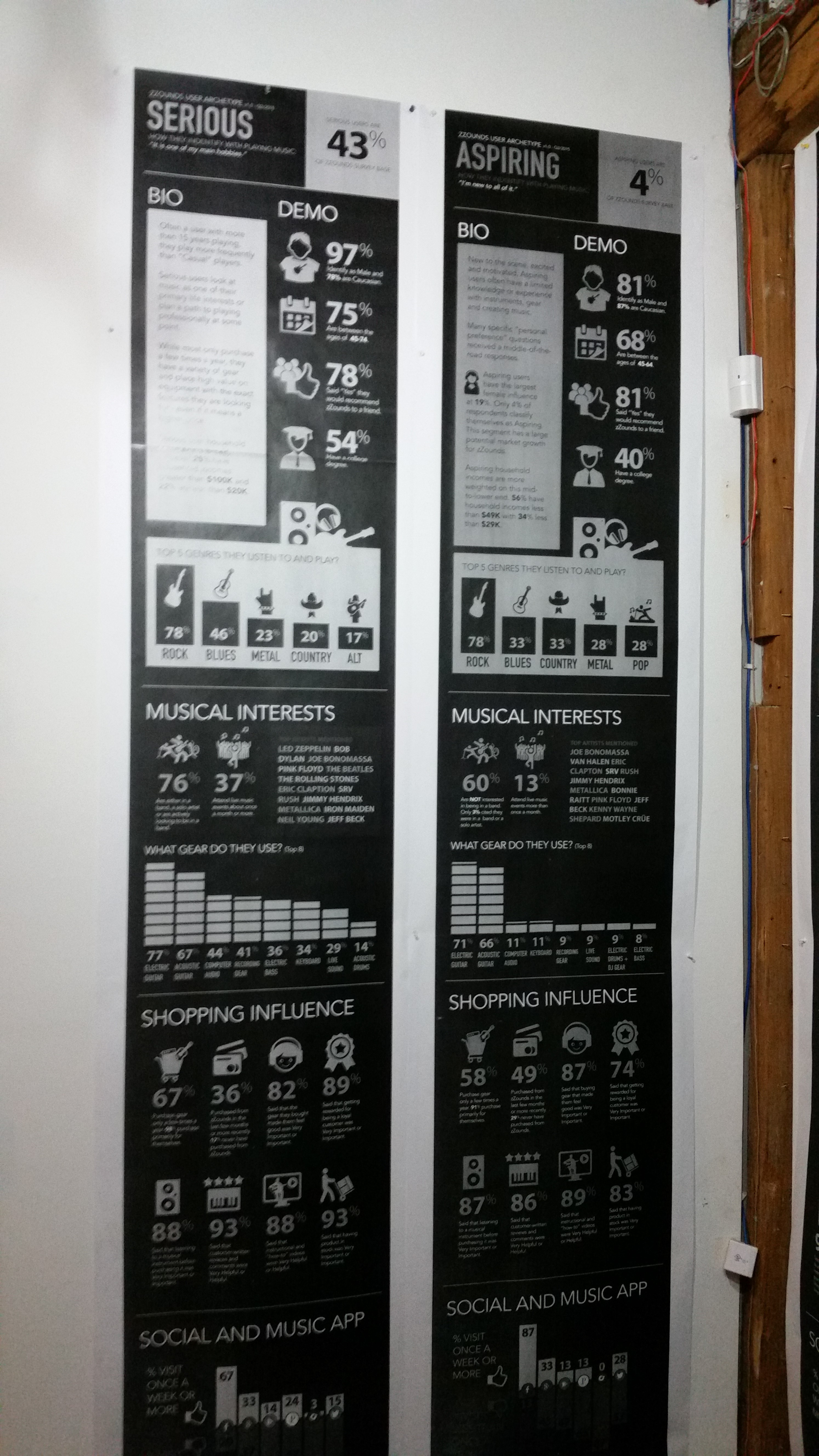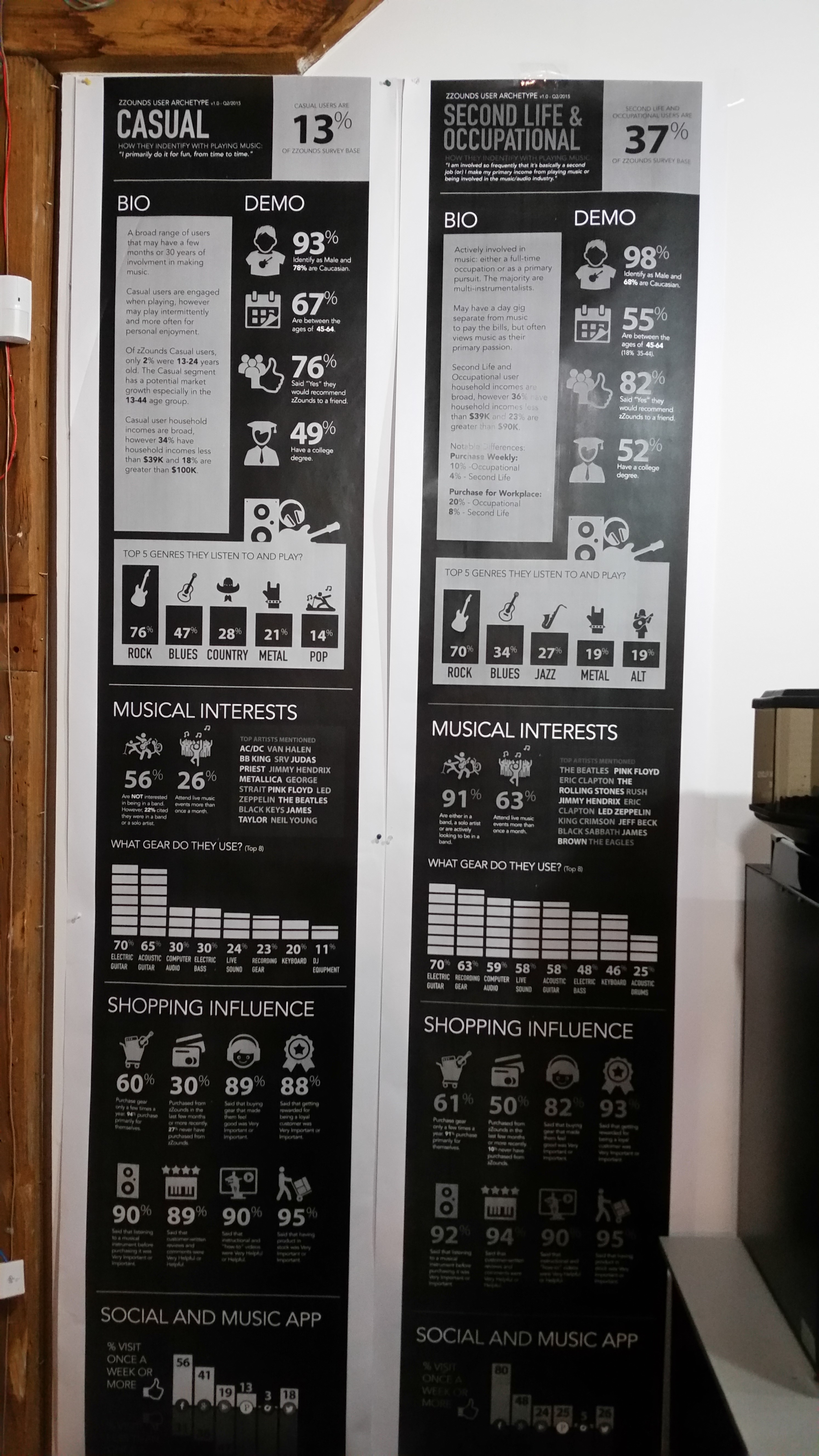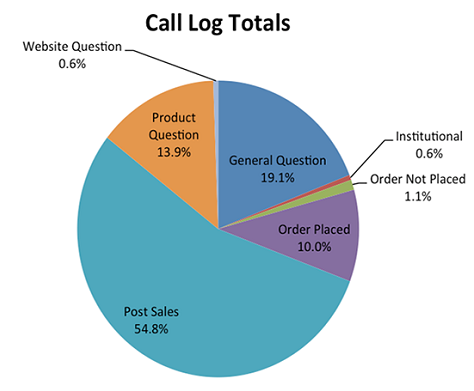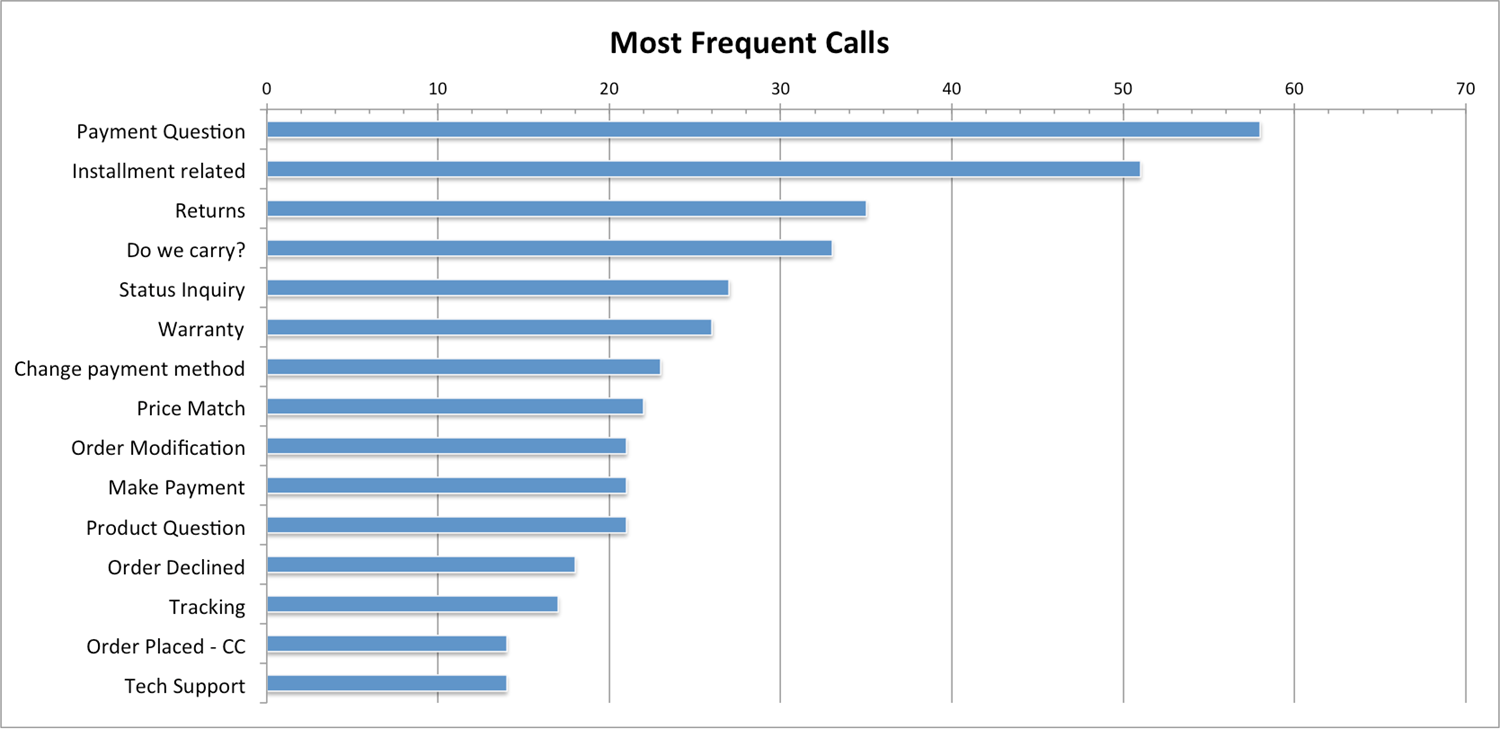zZounds UX Research

About
zZounds.com is one of the largest online music retailers in the US, specializing in providing musical equipment, live sound systems and accessory items to its customers. In 2015, they launched an initiative to learn more about their customer base. I was hired to assist them in that research. I also assisted them in user testing their beta mobile site, conducting market research, and gathering information for their new client account service.
1.0 Customer Archetype Research and Creation
It was hypothesized that several very distinct types of customers interacted with the zZounds site, but that little was known about exactly what those types were, and what they specifically needed. Working with a CX expert, we began by creating seven preliminary archetypes, based on assumptions about the customer base, and outlined a research plan to test them for validity. zZounds operates solely online, with no physical retail stores, relying on a massive call center staffed by musicians. This presented a unique opportunity to hear directly from the customers.
To begin, we interviewed customer service agents, some of which worked in specialty areas, and asked them about their experiences. Because they take dozens of calls every day, the questions focused on the most common customer interactions, complaints, and common services that they provided. We asked them to write their most frequent interactions on post-it notes, and place them under the pre-decided archetypes. Using the groupings from these responses, we began to whittle down the number of archetypes.
In conjunction with the Marketing department, we created a survey. The survey was created in SurveyGizmo, and sent to all zZounds newsletter subscribers, which came to more than 700,000 people. The survey was open for two weeks. It was send via email, with a follow-up reminder to respond in the next weekly newsletter. Responses were collected for two weeks, after which the survey was closed. Responses were then handed off to the CX designer, who analyzed and grouped responses.
From the patterns of answers we were left with 4 distinct archetypes: the Serious Musician, the Aspiring Musician, the Casual Musician, and the Second Life & Occupational Musicians.
Each of these archetypes has its own set of needs, buying patterns and social media and website usage habits. These archetypes will be used to inform future zZounds website design decisions. In the photos, you can see the Archetype stat boards, which are currently hanging in the zZounds corporate design area.


2.0 Mobile Application
zZounds.com also was preparing to launch a new responsive mobile site. The design of the current site was not meeting the needs of the customers. The zZounds programmers created a beta version of the mobile site, and the project manager and I were tasked with user testing and feedback.
User tests were recorded using a Mac and an overhead camera. Participants were both iPhone and Android users. Users were required to sign a consent form and a confidentiality agreement, and given an incentive for their time. Participants were tasked with exploring the mobile site, completing a series of tasks, and then visiting two competitor websites to compare their mobile exprerience. Users were not timed.
User responses were coded using Saturate, looking for common themes and complaints. Once all the data had been sorted, a Powerpoint presentation was created to summarize the data. The feedback and presentation were passed on to the programming department, and updates were made ahead of the official site launch.
3.0 Market Research
zZounds has a solid social media presence, frequently updating Facebook, Twitter, Youtube, Instagram, Soundcloud, Google Plus, Pinterest, and Vine accounts. I was tasked with finding out what the public opinion of zZounds is, compared to its competition.
I combed through social media and online seller ratings systems. I also looked into the ratings of its leading competitors: Guitar Center, Musicians Friend, Sam Ash, AMS, and Sweetwater. I logged each social media mention, and their relative popularity on Facebook and Twitter. I cataloged the positive, neutral, and negative feedback left on seller rating websites for each company. The top most common complains and complements from each company were noted and organized using Saturate. These findings were organized into a Powerpoint presentation, along with recommendations to improvements its social media standing.
4.0 Client Accounts
zZounds was doing research ahead of adding the capability of creating user accounts to its website. In order to decide what functionality should be included, I was tasked with quantifying the most frequent reasons that customers contacted the zZounds call center.
zZounds call center fields approximately 300, 000 calls per year. Many of those calls are recorded for quality and training purposes, and are kept in the system for about 9 months. My job was to listen to audio recordings, and decide whether they fit into one of 25 categories, or should be classified as something else.
I reviewed 540 audio recordings, noting the primary reason for each of the calls. Calls from all times of the year, including around the holidays, were included for a representative sample size. Afterwards, using pivot tables, I was able to combine the 25 sub-categories into 7 high-level categories. Those high level categories were:
- General Questions
- Institutional Questions
- Order Not Placed (because something went wrong, i.e. disconnected)
- Order Placed
- Post Sales inquiries
- Product Question
- Website Questions
Each of these categories had its own "frequent use" cases, and those were further broken down and graphed. The data was also split up in several ways, to see if any additional patterns could be established. Outside of the seven high-level categories, the calls were also split into "Non-Holiday" and "Holiday" calls, as well as examining the most frequent calls across all categories, and average call times depending on the time of year. I also used an ROI calculator to show the benefit to the business of reducing call center volume by creating user accounts. Customer service representative's compliance with safety standards were also noted, and it was found that in 4.4% of calls, CSRs broke security protocols. The results were presented to the Project Managers as a comprehensive Powerpoint.


5.0 zZounds FAQ section
At the same time, zZounds was looking to refresh their Frequently Asked Questions page, both design and content-wise. They had several FAQs already listed on the site, but wished to group them together in such a way that they could be accessed from accordion-style tabs with high-level labels.
My solution was to run a hybrid card sort on the current set of zZounds FAQs. The card sort was conducted online using Optimal Sort. The sort allowed for 7 high-level "buckets" with respondents having the option to create their own. The link to the card sort was sent to select zZounds employees, and left open for one week.
After one week, 22 responses had been collected. They were imported into Excel as a Similarity Matrix, and the strongest correlations were then categorized. Several questions had weak, but still present, correlations. Those were assigned to pre-existing buckets based on their strongest correlation.
The final result yielded 7 high-level categories, with no more than 13 related question within them. These categories and the related research were given to the Project Managers. These changes will be implemented once the site refresh begins, in Q3 of 2016.